Clouds and explosions¶
Oppenheimer has plenty of clouds in it, but as it is set and filmed on Earth, the clouds are typically look very realistic (as you might expect). Even the mushroom cloud was created using practical special effects.
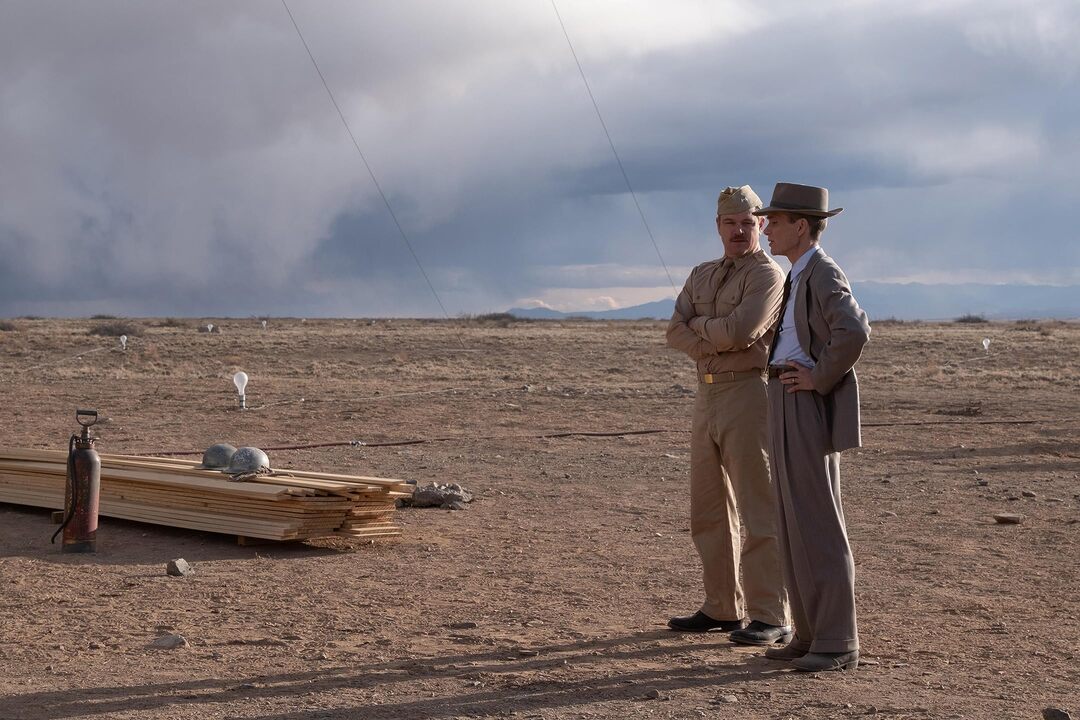
A deleted scene where Groves and Oppenheimer discuss whether the clouds look realistic (Universal).
This is true for almost the whole film. The final scenes of the film have some computer generated clouds and in these cases, the clouds start to look a little stranger, resulting in a film that is darker than it should be.
Very mild spoilers for Oppenheimer follow
Missile launches¶
At a few points in the film, Oppenheimer has short visions of ballistic missile launches. These missile leave trails of thin, hazy clouds behind them as they climb out of a lower layer of clouds.
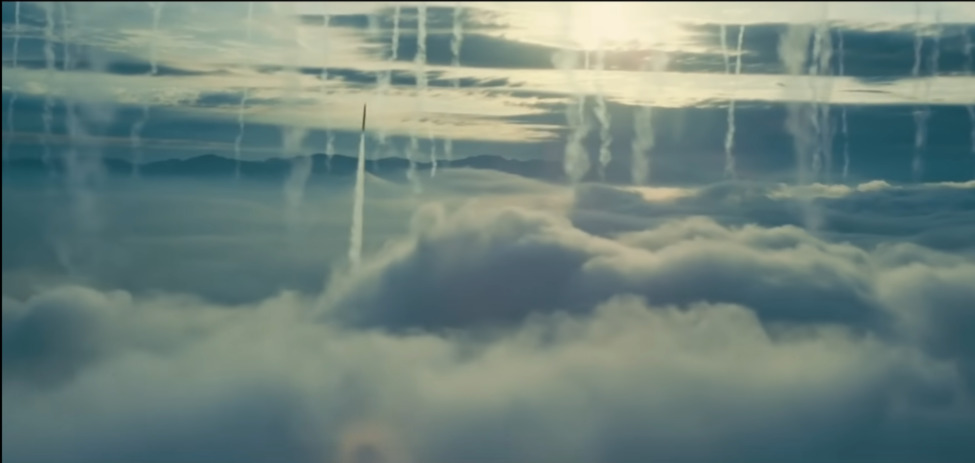
The cloudy trails left by missile launches (Universal)
I am not really an expert in ballistic missiles (my jobs is researching clouds), so I have to guess a bit at the types of missiles being launched. In the mid-late 1950s (when the later parts of the film are set), the USA had two main intercontinental ballistic missiles, the Titan and the Minuteman.
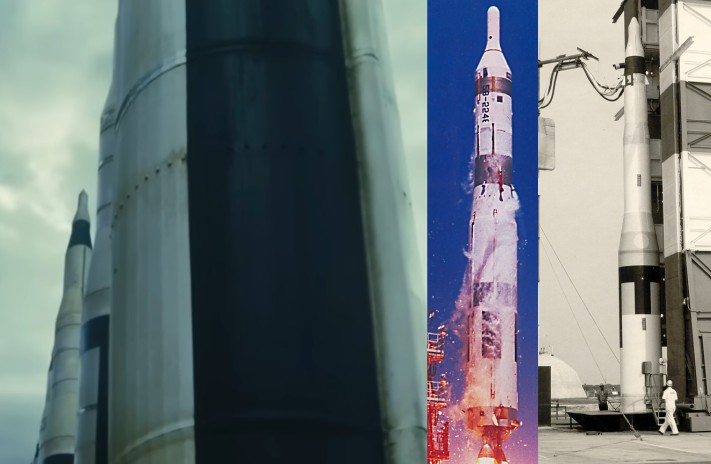
The missiles shown in Oppenheimer (left), comapred to a Titan rocket (middle) and a Minuteman I (right - Universal, USAF)
It is not immediately obvious which of these missiles Oppenheimer is imagining (if any), but there is an important difference between the two types. The Titan was liquid fueled, while the Minuteman used a solid rocket engine - this means they produce very different clouds as they launch.
Cloud from missiles¶
The type of trail left by a rocket depends on what type of rocket it is. Liquid fuelled rockets produce smoke and some water vapour, but will typically not produce a visible trail (except where they produce 'rocket contrails' [1]). In contrast, solid fuelled rockets burn metal (such as aluminium), which leaves a clear smoke trail from the metal oxides that they leave behind.
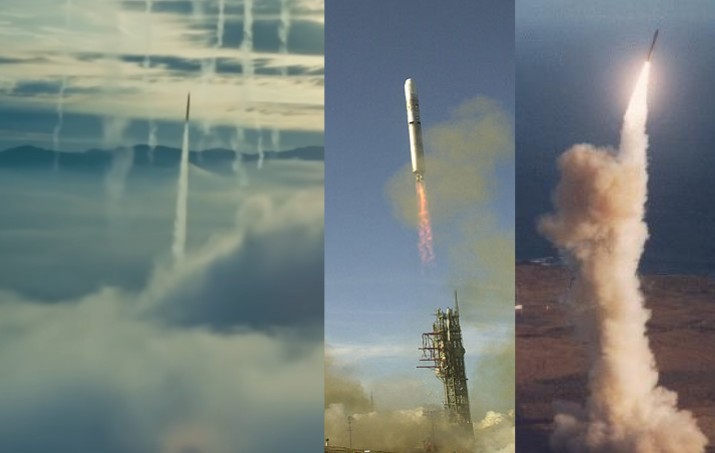
Nuclear missile launches - as depicted in Oppenheimer, a liquid fuelled Titan rocket launch and a solid rocket Minuteman launch (left to right, Universal, USAF)
Titan rockets don't leave a smoke trail. While they can create 'rocket contrails', they would only appear much higher in the atmosphere (far above the clouds we see at the bottom of the scene [2]). In contrast, Minuteman missiles would produce a much thicker smoke trail than we see that would also last for longer and not take on this hazy form.
As we don't really know which kind of missiles they are (and Oppenheimer might not be imagining real missiles anyway), it is hard to say if this is really an issue or not. Even more importantly, it is a dream sequence. As Oppenheimer didn't have a chance to read up on clouds produced by rockets, we should probably not judge this scene too harshly - it might just be reflecting the level of Oppenheimer's knowledge about clouds.
A dark place¶
Although we don't know much about Oppenheimer's knowledge of cloud produced by rockets, we know that as a physicist, he was aware of how the seasons work. As he lived in the UK, he was also aware that the UK was not north of the Arctic circle. This makes the next scene a little harder to explain.
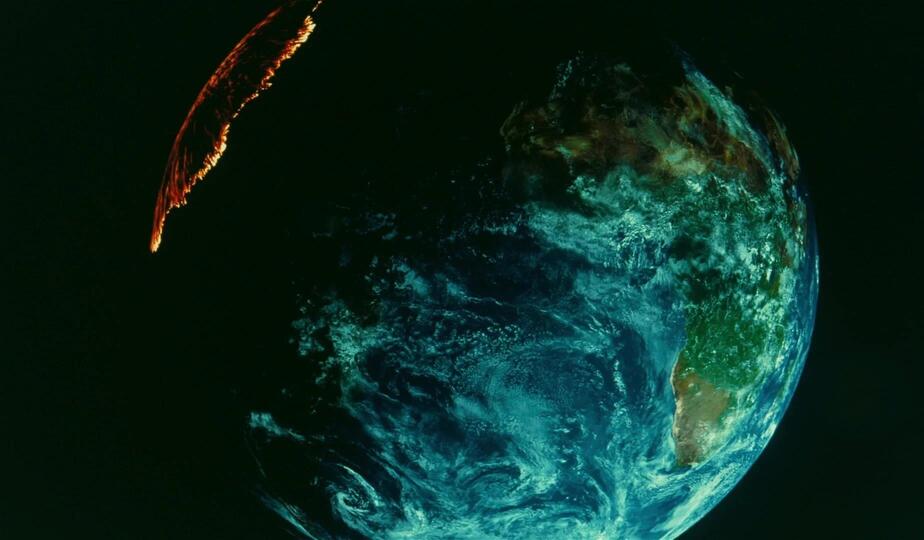
Sunrise over the Atlantic, except Europe is still in the dark... (Universal)
At first glance, this looks like a normal sunrise in northern hemisphere winter. There is plenty of cloud, which is a good stat for a computer-generated image of the Earth. However, the longer you look at it, the stranger it starts to look.
Everywhere North of the Sahara appears to be in darkness - it looks like it is almost midday in western north Africa (Egypt), so anything north of Egypt is not going to get any sun today at all.
For comparison, here is an mid-winter image above (approximately) the same location, generated from real satellite data
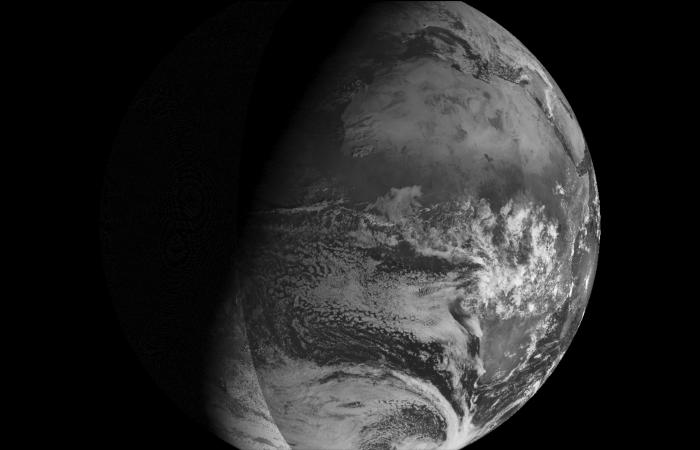
Composite image generated from geostationary satellite imagery at 8am (UTC) on the 22nd of December 2023. The line near the bottom is where the images from different satellites are merged (NOAA OSPO)
You can see that even at the winter solstice (the shortest day of the year in the Northern Hemisphere), Europe still gets plenty of sun.
In mid-winter, anywhere north of the Arctic circle gets no sunlight for the whole day. On our Earth, this is just north of Iceland (at about 66N). Assuming Oppenheimer is imagining the Earth at the winter solstice, the Arctic circle in his world is about 40N, meaning that even places like New York wouldn't see a sunrise at Christmas.
While Oppenheimer might not have known about rockets, he certainly knew that Europe gets sun in winter! [3]
The biggest clouds?¶
Look again at the clouds, particularly around sunrise. In the real image, no clouds are visible at night, but in Oppenheimer's vision, clouds are visible even before sunrise. It is not that this doesn't happen in the real world - the curvature of the Earth means that the tops of clouds can be light even when the surface is dark [4]. When looking from space, this means that you would expect to see some clouds just inside the nighttime part of the image.

Some clouds are still visible at night, as long as they are tall enough
However, for even the biggest clouds in the world, this effect only allows clouds to be visible about 400km into the nighttime part of the image. In Oppenheimer' vision, these clouds are over 1000km 'into' nighttime - these clouds would have to be over 100km high (stretching into space)!
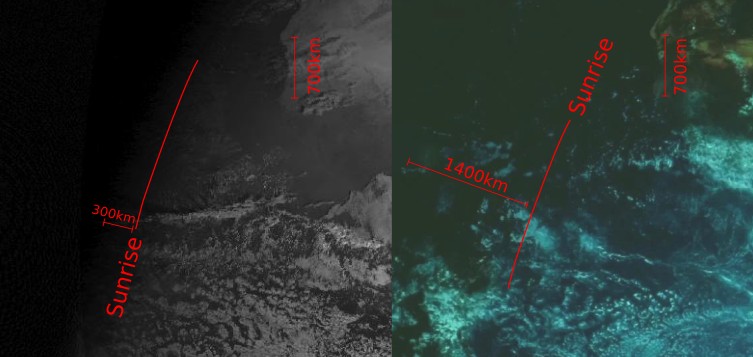
Comparing clouds visible near sunrise in a real satellite image (left) and Oppenheimer's vision (right), along with some approximate distances [5].
While some clouds are visible before sunrise in the real image (on the left), they are only a short distance away from daylight. In Oppenheimer, they are much further into nighttime and so would have to be unrealistically tall to reach the sunlight.
Overall score: 5/10¶
What can you expect from theory alone?: Oppenheimer gets some important details right, but misses others. Nuclear weapons are not a jolly subject, but Oppenheimer's Europe has an unrealistically dark ending.

I knew should have read more about clouds... (Universal)
Clouds are not an important part of the story, but even then, it is nice that Oppenheimer gets many things right. Oppenheimer avoids the biggest issue of clouds in film, showing the Earth as mostly covered by cloud.
While some of the issues can be explained away as occurring in a dream, others (such as placing Europe inside the Arctic circle) are bigger misses.
As with many films, the best way to avoid these issues would be to use real images of Earth. There are plenty of options for these kind of pictures, including real pictures from Apollo and composites created from weather satellite images. Christopher Nolan, if you are reading - I am happy to help.
Comments by email
Notes¶
| [1] | The water produced by rocket engines is enough to form clouds under certain conditions, these clouds are effectively contrails (just like those behind an aeroplane). |
| [2] | This video shows a Titan launch - notice how the cloud doesn't form behind the rocket until several minutes into the video. These rocket contrails easilt don't form in the lower parts of the atmosphere. |
| [3] | Oppenheimer lived in the the UK and Germany for several years during his PhD, experiencing several winters. |
| [4] | The most spectacular example of these are known as noctilucent clouds, but they are pretty rare and don't often occur near the Equator. They are actually made more frequent by rocket launches, particularly rockets with solid rocket boosters (such as the Space Shuttle and SLS). |
| [5] | Note that the Oppenheimer image has been brightened to make the surface easier to see. Sunrise is not well defined in Oppenheimer, so the position is approximate. |